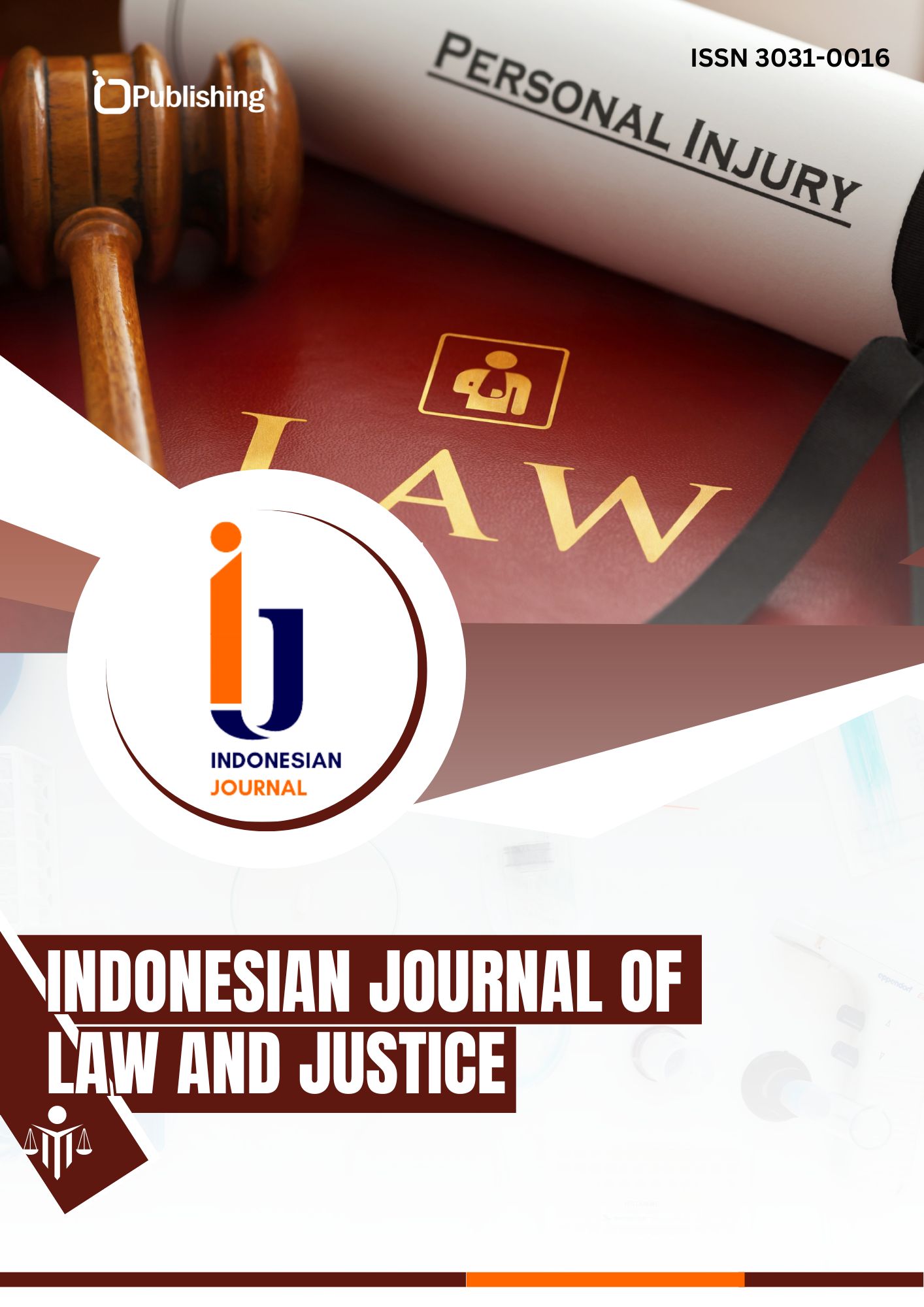Evaluasi Respons Hukum Humaniter Internasional terhadap Perang Siber
DOI:
https://doi.org/10.47134/ijlj.v2i2.3394Keywords:
Cyber Warfare, Cyberspace, International Humanitarian Law, Cyber Attacks, State SecurityAbstract
Cyberwarfare is a form of warfare that cannot be explicitly addressed by existing international law. While most experts agree that legal restrictions must apply to this phenomenon, However, the international community has not been able to reach a consensus on how international humanitarian law (IHL) can be adapted. After outlining several cyber conflicts, this article argues that this issue is still unresolved academically. We use descriptive research methods to look for adequate and sufficient descriptions of processes, objects, activities, and people. Some parts of the Hague Convention and the Geneva Convention may indeed be relevant to cyber warfare, but their specific relevance cannot respond to this phenomenon. This is confirmed by the emergence of the virtual world, which is more recent when compared to the birth of the instrument. Many cyberattacks unavoidably result in losses for the parties, making these breaches more likely in cyber conflicts than in conventional wars. States have strong incentives to engage in cyberattacks, despite the risk of being accused of war crimes. With this in mind, this article also argues that IHL should evolve to encourage the creation of a legal umbrella against cyber warfare in some situations and provide better guidance for states in carrying out these types of attacks.
References
Alves Jr, S. (2014). The Internet balkanization discourse backfires. SSRN. https://doi.org/10.2139/ssrn.2498753
Arthur, C. (2014). Digital wars: Apple, Google, Microsoft and the battle for the Internet. Kogan Page Publishers.
Bellanger, P. (2012). On digital sovereignty. Le Débat, 3, 149.
Bos, T. (2005). The impact of using virtual reality technology to train for law enforcement critical incidents. J. Calif. Law Enforc, 39(2), 5.
Brenner, S. W., & Goodman, M. D. (2002). In defense of cyberterrorism: An argument for anticipating cyber-attacks. U. Ill. J.L. Tech & Pol'y, 1.
Buchan, R. (2016). Cyber warfare and the status of Anonymous under international humanitarian law. Chinese Journal of International Law, 15(4), 741.
Cerf, V. G., & Leiner, B. M. (1997). Brief history of the Internet. Internet Society.
Dörmann, K. (2004). Applicability of the Additional Protocols to computer network attacks. International Committee of the Red Cross.
Dogrul, M., Aslan, A., & Celik, E. (2011). Developing an international cooperation on cyber defense and deterrence against cyber terrorism. IEEE.
Eom, J.-H., et al. (2012). Cyber military strategy for cyberspace superiority in cyber warfare. IEEE.
Fidler, D. P. (2015). The Snowden Reader. Indiana University Press.
Gressin, S. (2017). The Equifax data breach: What to do. U.S. Federal Trade Commission.
Greenberg, L. T., Goodman, S. E., & Soo Hoo, K. J. (1998). Information warfare and international law. National Defense University Washington DC.
Harris, B., Konikoff, E., & Petersen, P. (2013). Breaking the DDoS attack chain. Institute for Software Research.
Helbing, D. (2015). Thinking ahead: Essays on big data, digital revolution, and participatory market society. Springer.
Kelsey, J. T. G. (2008). Hacking into international humanitarian law: The principles of distinction and neutrality in the age of cyber warfare. Michigan Law Review, 1427.
Klimek, L. (2012). Combating attacks against information systems: EU legislation and its development. Masaryk University Journal of Law and Technology, 6, 87.
Markoff, J. (2008). Internet attacks seen as more potent and complex. International Herald Tribune.
Marx, N. (2013). Storage wars: Clouds, cyberlockers, and media piracy in the digital economy. Journal of E-Media Studies, 3(1).
McCoubrey, H. (1990). International humanitarian law: The regulation of armed conflicts. Dartmouth Publishing.
McCoubrey, H. (2019). International humanitarian law: Modern developments in the limitation of warfare. Routledge.
No, DCSINT Handbook. (2006). Critical infrastructure threats and terrorism.
Pipyros, K., et al. (2016). Cyberoperations and international humanitarian law: A review of obstacles in applying international law rules in cyber warfare. Information and Computer Security, 24(1), 38.
Posch, R. (2017). Digital sovereignty and IT-security for a prosperous society. In Information Future (pp. 77–90). Springer.
Rugge, F. (2018). Confronting an "Axis of Cyber"?: China, Iran, North Korea, Russia in Cyberspace. Ledizioni.
Sassen, S. (2012). Interactions of the technical and the social: Digital formations of the powerful and the powerless. Information, Communication & Society, 15(4), 455.
Schmidt, E., & Cohen, J. (2013). The new digital age: Reshaping the future of people, nations and business. Hachette UK.
Schmitt, M. N. (2014). The law of cyber warfare: Quo vadis. Stanford Policy Review, 25, 269.
Schmitt, M. N., & Watts, S. (2015). The decline of international humanitarian law opinio juris and the law of cyber warfare. Texas International Law Journal, 50, 189.
Solce, N. (2008). The battlefield of cyberspace: The inevitable new military branch-the cyber force. Albany Law Journal of Science & Technology, 18, 293.
Swanson, L. (2010). The era of cyber warfare: Applying international humanitarian law to the 2008 Russian-Georgian cyber conflict. Loyola International & Comparative Review, 32, 303.
Taipale, K. A. (2007). Seeking symmetry on the information front: Confronting global jihad on the Internet.
Terry, J. P. (1999). Cyberspace and the use of force. Duke Journal of Comparative & International Law, 9(2), 491.
Vitt, K. (2019). Die Digitalisierung der Verwaltung braucht effiziente föderale Kooperation. Der Moderne Staat–dms Zeitschrift für Public Policy, Recht und Management, 12(1).
“Mendagri sebut data e-KTP 110 juta warga Indonesia ada di perusahaan asing.” (2016). Retrieved from https://news.detik.com/berita/d-3353022/mendagri-sebut-data-e-ktp-110-juta-warga-indonesia-ada-di-perusahaan-asing.
Downloads
Published
How to Cite
Issue
Section
License
Copyright (c) 2024 Dhita Evany Aristyawati, Rohmatun Uyun, Adelia Zahra Nugroho

This work is licensed under a Creative Commons Attribution 4.0 International License.










